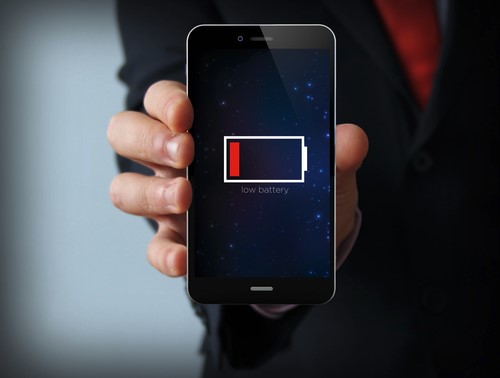
Smartphone batteries are getting smarter thanks to nanotechnology. Over the last year, Samsung Ventures has been funding Israeli nanotech company StoreDot to develop technology that can recharge an electric car in five minutes. StoreDot had previously attracted attention by designing a way to recharge a smartphone battery in 30 seconds. The company’s method uses “nanodots” that are composed of bioorganic peptides to build nanotubes that can store and emit large amounts of energy rapidly.
StoreDot has scheduled its phone-charging technology to come on the market this year. Samsung has been testing nanotechnology on devices such as the Galaxy S7, setting the stage for the new technology to become available to consumers. Here’s a closer look at some of the cutting-edge nanotechnology research and development that is making smartphone batteries better.
Curing the Cause of Battery Death
Nanotechnology can help address one of the two main causes of lithium-ion battery death. The flow of electrons in a lithium-ion battery can be compared to water flowing. Ideally, the electrons would flow freely, but instead, electrons coupled to lithium ions get trapped and form disconnected “puddles” of charge that accumulate over time. This accumulation makes batteries less efficient after each charge, eventually making them too unstable to use.
Chemists from Texas A&M are exploring two ways to fix this. One is using nanotechnology to redesign smaller battery architectures that allow for faster uptake and release of lithium ions. The other approach, which Texas A&M’s team is pursuing, is discovering new materials that enable smartphone architectures to be redesigned to remove electron traps.
Increasing Electrode Size
Other researchers are taking a different approach to battery life. Prague-based company HE3DA has been using nanotechnology to increase the size and surface area of battery electrodes, which are rods inside batteries that store energy. Electrodes are currently flat, but HE3DA president Jan Prochazka says nanotechnology can make them three-dimensional, fitting more surface area into the same space. This makes the electrodes act like energy-absorbing sponges and enables them to absorb more energy during the charging process, which increases the battery’s storage capacity. By making the electrodes ten times larger, for example, smartphone batteries could store ten times as much energy on one charge.
Prochazka is focused on applying the technology to electric car batteries, but he says the same principle applies to smartphone batteries. Prochazka anticipates the technology will eventually become mainstream.
Improving Anode and Cathode Chemistry
Battery company Amprius is taking an even more radical approach to improving lithium-ion batteries through nanotechnology. While most researchers are focused on tweaking the chemical composition of battery electrodes or the electrolyte liquids that carry a battery’s charge, Amprius is using nanotechnology to redesign the atomic architecture and control the chemical reactions of battery anodes (the electrodes where electrons leave a battery) and cathodes (the electrodes where electrons enter a battery).
One of Amprius’ innovations is using silicon nanowires that expand and contract as they absorb and release lithium ions. They also use egg-like nanoclusters to form shields around silicon nanoparticles, which prevents unwanted reactions that cause anodes to wear down over time. More recently, the company has started making thin carbon sheets made of graphene to shield nanowires that pack more power into a given space at a lower production cost. They’re also experimenting with substituting lithium metal for silicon to store more energy in a more lightweight design.
Amprius currently supplies phone batteries with silicon electrodes that store 10 percent more energy than the best conventional lithium-ion batteries currently on the market. The company has developed prototypes that can store up to 40 percent more energy. It also demonstrated that its batteries can retain 97 percent of their original capacity after 1,000 charge and discharge cycles.





Recent Super Official Comments